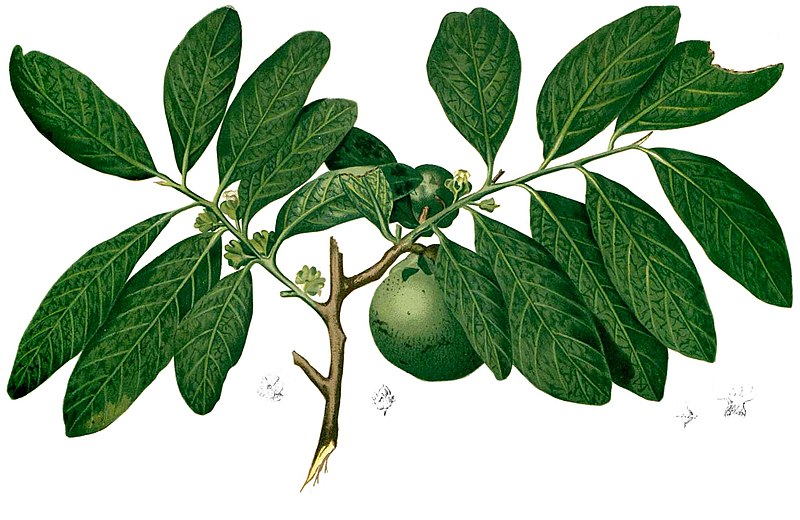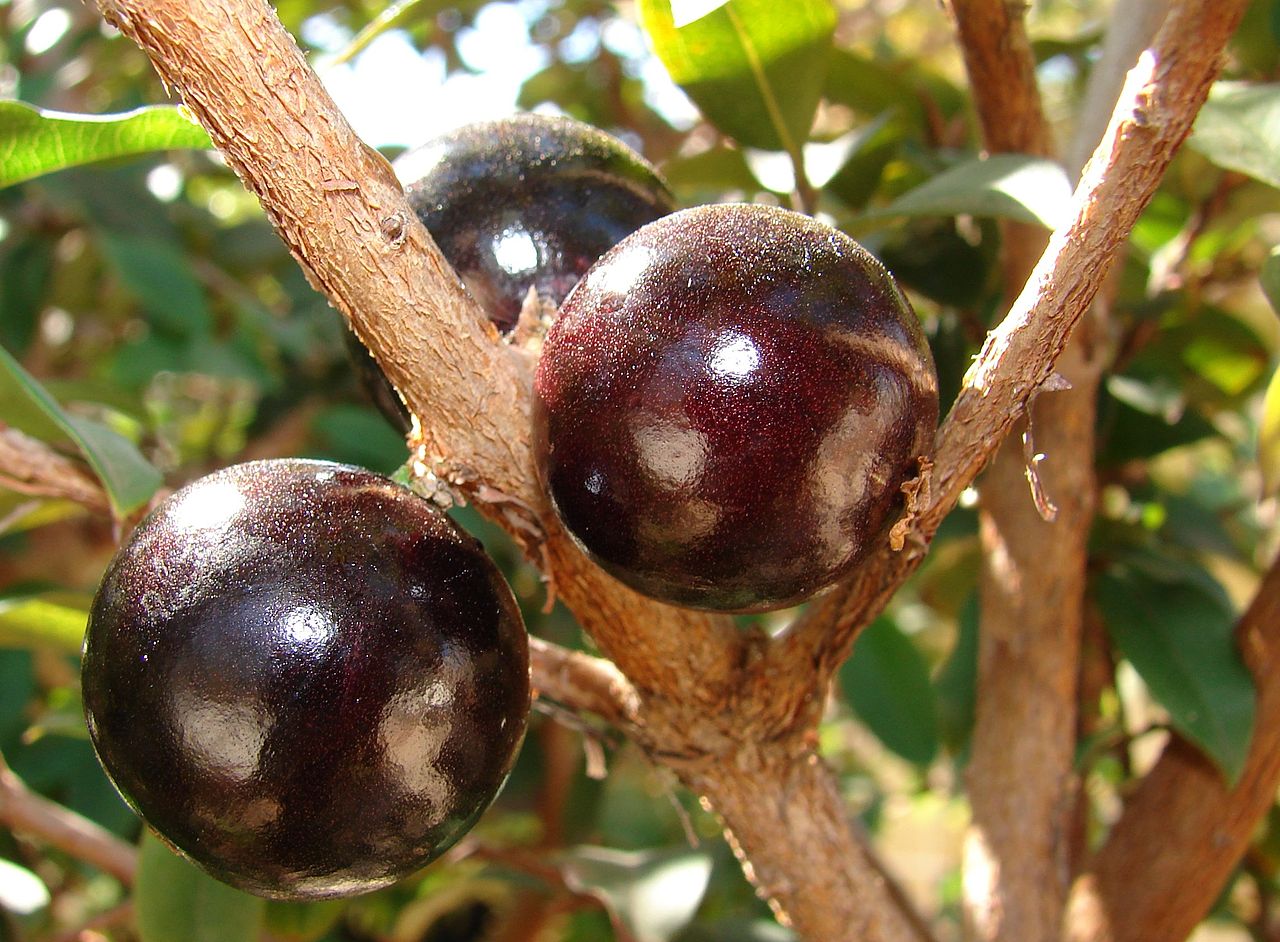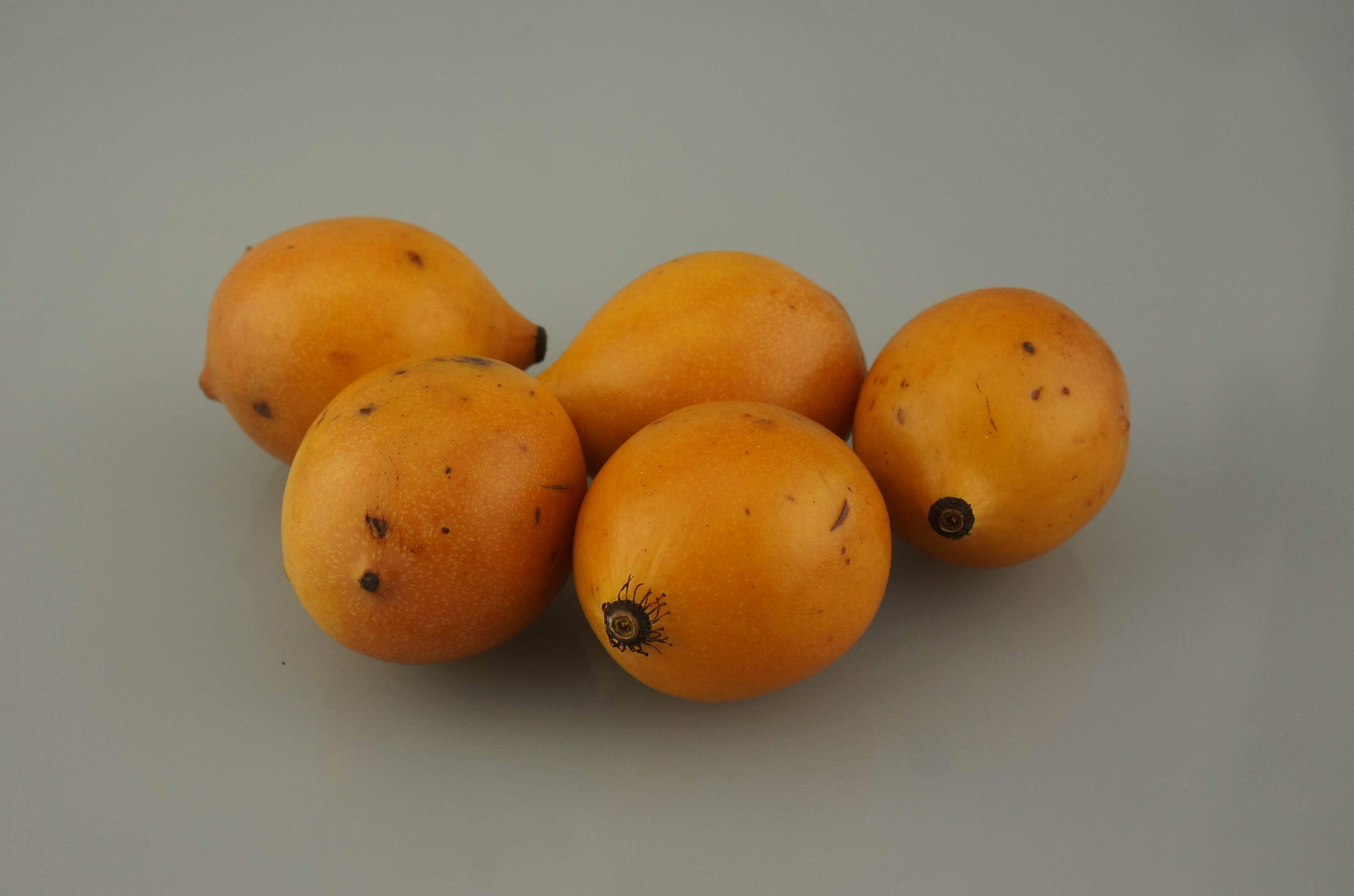
Tropical Wild Edibles - Black Sapote
Botanical name: Diospyros nigra
Common names: Chocolate pudding fruit, the black sapote, black soapapple, zapote prieto.

Physical Appearance: A medium sized evergreen tree with black bark, growing up to 25 metres in height. The tree has elliptic oblong leaves which are dark green in colour and are tapered at both ends. Some trees only bare male flowers whilst others bare male and female flowers however they may or may not be able to self-fertilize, depending on the specimen. The flowers are white in colour and lobbed. On average the leaves are 10-30cm in length. The tree must reach three to four years of maturity before it will bear fruit. The tree is capable of producing large crops annually. Growth rate is initially, approximately 30cm per year. This rate of growth increases as the tree matures.

Natural habitat: Native to South America, the tree can be found in warmer climates below 600 metres elevation. It is not particularly fussy about soil type although prefers well drained soils. Black sapote is also grown in the Philippines, Australia, New Zealand and other tropical countries. The tree is sensitive to hard frost.
The fruit: These are roughly apple sized, growing up to 12cm in diameter. The skin is initially dark green in colour turning yellow when the fruit is ripe. The unripe fruit body is white and fibrous turning a dark golden brown when ripe. According to Charles Boning, the fruit has a taste, smell and consistency of chocolate pudding although this is not entirely accurate. The texture has been likened to eating papaya (pawpaw). The unripe fruit can be astringent, bitter, irritating and even caustic. Care should be taken to make sure the fruit is fully ripe before consumption. The fruit should look like it is almost past its best.

The large seeds are contained within the fruit bodies. Seeds vary in number, usually up to 12 per fruit. In the wild, the tree normally grows from seed although cross-pollination is also possible.
Contains useful amounts of salicylic acid (vitamin C).

Point of interest: The chocolate pudding fruit has been used as a fish poison in the Philippines.
Recipe ideas: Black sapote can be used as an alternative to banana for sweet bread baking i.e. banana cake etc.
Photos via Wikipedia courtesy of:
Asit K. Ghosh - This file is licensed under the Creative Commons Attribution-Share Alike 3.0 Un-ported license.
Critical Miami - This file is licensed under the Creative Commons Attribution-Share Alike 2.0 Generic license.
Tatiana Gerus - CC BY 2.0


